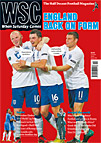 James Calder recalls a time when the Colombian championship was dominated by well-paid foreign players
James Calder recalls a time when the Colombian championship was dominated by well-paid foreign players
The long-term significance
The beginning of the end of El Dorado, the great Colombian gold rush. Blacklisted by FIFA following its foundation in 1948, the national professional league attracted some of the world’s leading players, lured by high wages funded by the country’s economic boom, massive attendances and a conservative government anxious to divert attention away from widespread and bloody political and social unrest.
Angered by the continuing exodus of its stars, the Argentinian FA complained of “piracy”, leading FIFA to expel Colombia in 1951. The dispute was ended shortly afterwards by the Pacto de Lima, an agreement by which an increasingly cash-strapped league agreed to let its well-paid imports return to their clubs of origin by October 15, 1954, in return for readmission to the international fold. The Colombian free-for-all also had an impact on the English game, the defection of a handful of players resulting in two sizeable increases in the maximum wage, which was eventually abolished in 1961.
Story of the season
The 1951 championship featured a largest-ever field of 18 clubs, two of which (Atlético Quindío and Samarios) had been founded in the close season. Some 287 of the 440 players taking to the pitch were foreigners, nearly half of them Argentinians, large contingents of whom headed to Deportivo Cali and Santa Fe among others. Meanwhile, Cúcuta assembled a largely Uruguayan line-up, Deportivo Pereira and Boca Juniors mined the Paraguayan league and Atlético Junior brought in a clutch of Hungarians. Only Atlético Nacional bucked the trend, remaining steadfastly “Colombian”.
No one recruited more wisely than Millonarios, however. Adding renowned Argentinians Hugo Reyes, Antonio Báez and Reinaldo Mourín to a side that already featured Alfredo Di Stéfano and Adolfo Pedernera – a former member of the fabled River Plate quintet La Máquina – the Bogotá club would lose only twice all season, using just 18 players in the process.
Adopting the rioplatense style developed in Uruguay and Argentina – based on feints and dribbling – Millonarios would become known over the course of the season as “the Blue Ballet”. Earning a nationwide following by amassing big leads and then easing off to delight the crowds with their graceful football, they went 21 games unbeaten between May 20 and November 1. Though outscored by Cali rivals Boca Juniors, they finished 11 points clear to win the second of their four El Dorado league titles and subsequently earn an invitation from Real Madrid for a famous tour of Spain the following year.
For the record books
A total of 61 goals were scored in nine games on the weekend of 28-29 July, an all-time high for the Colombian top flight. Samarios recorded a league record 12-1 defeat of Universidad, six of the goals coming from Hungarian import Julio Szengeller, while Boca Juniors trounced Huracán 9-1 and Millonarios put seven past Sporting.
Same place today
Ten teams (Millonarios, Cúcuta Deportivo, Deportivo Cali, Deportes Quindío, Santa Fe, Junior, Deportivo Pereira, América de Cali, Atlético Nacional and Independiente Medellín) currently play in the top flight along with Once Caldas, an amalgam of Once Deportivo and Deportes Caldas. Of those clubs only Millonarios, Santa Fe and Atlético Nacional are ever-presents.
Moved furthest away
Boca Juniors, Sporting, Universidad and Huracán have since disappeared, although Boca re-formed as a youth team that later produced Hugo Rodallega. In 1953 Samarios were renamed Unión Magdalena, now in the second division with Bucaramanga.
Went onto greater things
Alfredo Di Stéfano: This season’s top scorer with 31 goals, the Argentinian great left Colombia for Spain in 1953 and went on to win five consecutive European Cups with Real Madrid.
Gabriel Ochoa Uribe: The Millonarios keeper retired in 1958 and became the country’s most famous coach, winning the league title 13 times.
Alfonso Senior Quevedo: A former customs officer and the founder of Millonarios, Senior went on to become president of the Colombian FA, leading the country’s initially successful bid to host the 1986 World Cup.
Disappearing from view
Adolfo Pedernera El Maestro: Retired after a short spell with Huracán in his native Argentina in 1955. He then took Colombia to the 1962 World Cup finals but failed to steer Argentina to Mexico 1970.
Deportes Caldas: The 1950 champions went out of business at the end of the season along with local rivals Once Deportivo.
Delfín Benítez Cáceres: A hero at Argentina’s Boca Juniors in the 1930s, where he still holds the club record for most goals scored by a foreigner, the Paraguayan veteran retired in 1952.
From WSC 284 November 2010